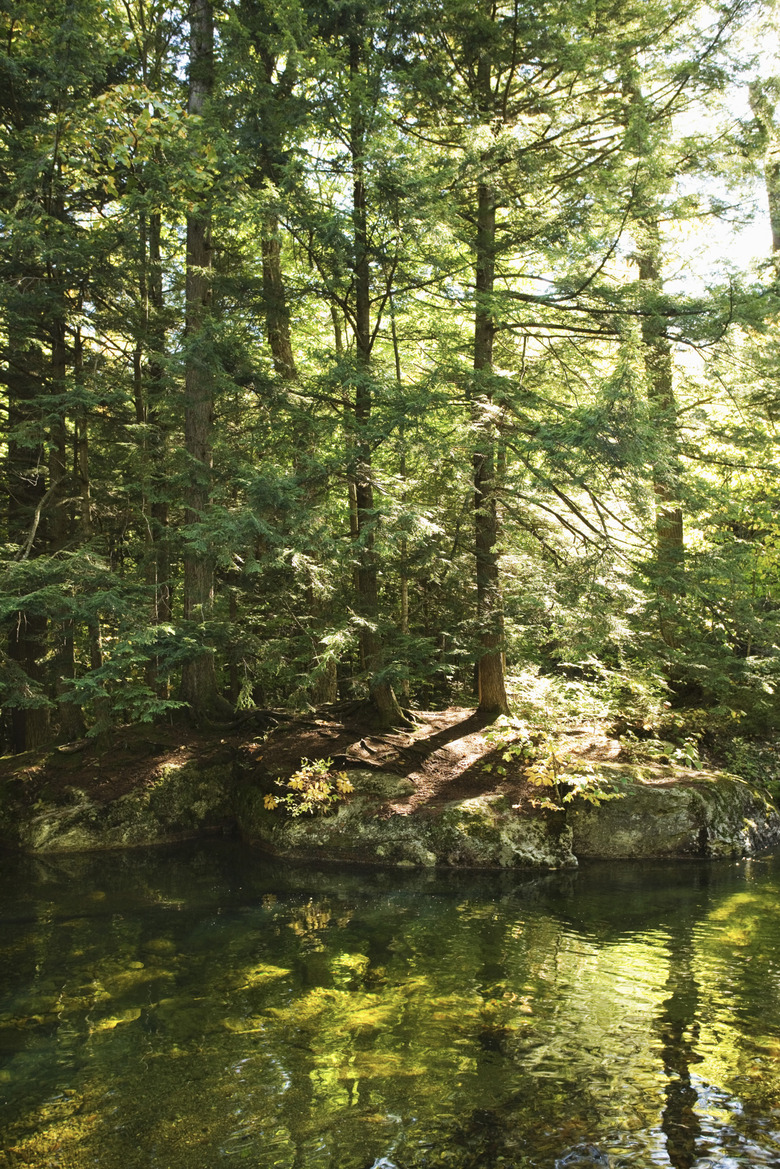The Cycle Of Oxygen Through An Ecosystem
Atmospheric oxygen is required by all terrestrial and aquatic plants and animals for respiration: the breakdown of organic compounds for carbon and energy necessary to cellular maintenance and growth. Plants and animals then return oxygen back to the atmosphere, soil or water, though there are multiple pathways for oxygen to take, primarily by interacting with other molecules in soil and water.
Air, Soil and Water
Air, Soil and Water
Earth's atmosphere has an oxygen concentration of 21 percent and the element is rapidly cycled between plants, animals and the atmosphere through photosynthesis and respiration. In water, oxygen moves much slower, so oxygen consumption through respiration often exceeds production through photosynthesis, resulting in daily shifts in dissolved oxygen concentrations. Similarly, oxygen penetration into saturated soil is much slower than in dry soil which leads to different oxygen concentrations in different parts of the soil. This, in turn, influences further oxygen transport.
Photosynthesis
Photosynthesis
In photosynthesis, atmospheric carbon dioxide is converted into glucose inside the leaves of plants. Oxygen is a byproduct of photosynthesis and is released by the plants back into the atmosphere. It can also be released through the root system, providing oxygen to the soil. Submerged aquatic vegetation and phytoplankton release oxygen produced during photosynthesis into the water. Both terrestrial and aquatic plants make oxygen available for respiration by other plants and animals.
Respiration
Respiration
Respiration is a cellular process performed by both plants and animals. During respiration, molecular oxygen is used to break down organic carbon compounds. In animals, this carbon comes from the food they consume, while carbon in plants is obtained during photosynthesis. Respiration that requires oxygen is termed aerobic respiration and consists of oxygen accepting electrons from carbon. Elements other than oxygen can be used to accept electrons from carbon, though they are less efficient.
Anaerobic Respiration
Anaerobic Respiration
Oxygen provides the most energy to plants, animals and microbes during respiration. However, when all of the oxygen in water or saturated soil has been consumed, some microbes can substitute other compounds for oxygen, including iron, manganese, nitrate and sulfate, in a process known as anaerobic respiration. Anaerobic respiration is common in wetland soils, which are frequently flooded and have lower oxygen concentrations than drier soils. When oxygen reenters the soil or water, aerobic respiration starts again.
Cite This Article
MLA
Martonas, Jonas. "The Cycle Of Oxygen Through An Ecosystem" sciencing.com, https://www.sciencing.com/cycle-oxygen-through-ecosystem-6435/. 24 April 2017.
APA
Martonas, Jonas. (2017, April 24). The Cycle Of Oxygen Through An Ecosystem. sciencing.com. Retrieved from https://www.sciencing.com/cycle-oxygen-through-ecosystem-6435/
Chicago
Martonas, Jonas. The Cycle Of Oxygen Through An Ecosystem last modified August 30, 2022. https://www.sciencing.com/cycle-oxygen-through-ecosystem-6435/
